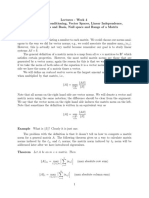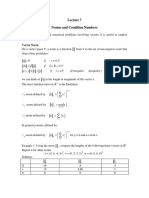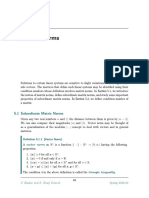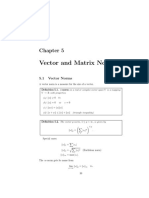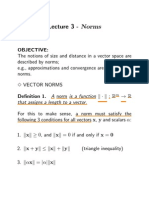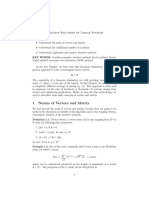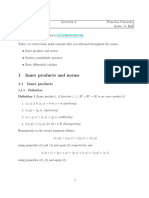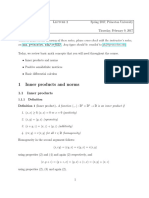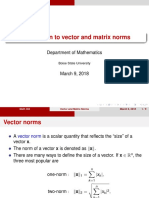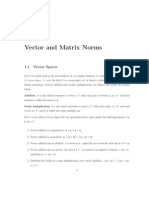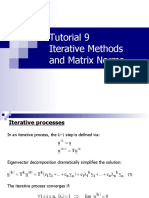0% found this document useful (0 votes)
246 views45 pagesMatrix Norms: Tom Lyche
The document discusses matrix norms. It defines what constitutes a matrix norm and provides examples of common matrix norms such as the Frobenius norm, sum norm, and max norm. It also covers properties of matrix norms such as equivalence of norms, continuity, unitary invariance, submultiplicativity, and consistency. Explicit expressions are provided for p-norms including the 2-norm (spectral norm). The document discusses how matrix norms relate to vector norms and operator norms.
Uploaded by
Abdul SMCopyright
© © All Rights Reserved
We take content rights seriously. If you suspect this is your content, claim it here.
Available Formats
Download as PDF, TXT or read online on Scribd
0% found this document useful (0 votes)
246 views45 pagesMatrix Norms: Tom Lyche
The document discusses matrix norms. It defines what constitutes a matrix norm and provides examples of common matrix norms such as the Frobenius norm, sum norm, and max norm. It also covers properties of matrix norms such as equivalence of norms, continuity, unitary invariance, submultiplicativity, and consistency. Explicit expressions are provided for p-norms including the 2-norm (spectral norm). The document discusses how matrix norms relate to vector norms and operator norms.
Uploaded by
Abdul SMCopyright
© © All Rights Reserved
We take content rights seriously. If you suspect this is your content, claim it here.
Available Formats
Download as PDF, TXT or read online on Scribd
/ 45



